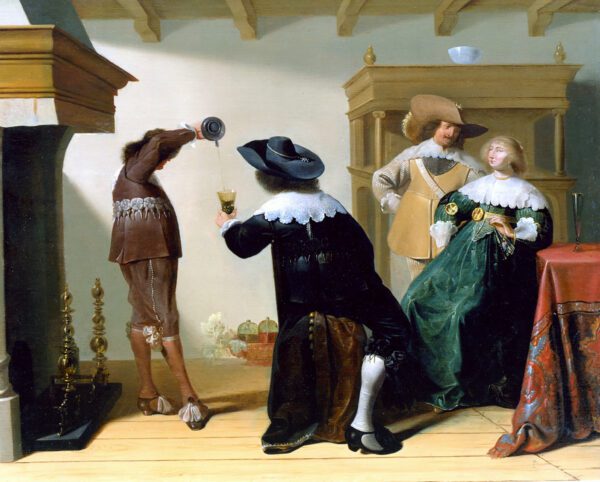“Elegant company drinking wine in an interior”, 1637
Oil on panel: 44,5 x 56,5 cm;
signed and dated ‘P. Verelst 1637’ (on the base of the fireplace)
"*" indicates required fields
Notes
Pieter Verelst was born in Dordrecht, Netherlands, 1618. He began as a pupil to artists Gerard Dou and Jacob Gerritsz Cuyp. Which led to him becoming a member of the Dordrecht Guild of St. Luke in 1643. In 1651 Verelst lived in the Hague, where he produced five supraportes for Huis ten Bosch, the royal palace in den Hague. He had an eclectic style that was showcased in his history paintings, which suggest a level of familiarity with the works of painters from the Rembrandt School.
In 1656 Verelst became one of the founders of the local confrerie Pictura, an academic club for artists. Verelst became a popular teacher, having taught artists such as Hermanus van Grevenbroeck, Anthony de Haen, and Otto Hoynck.
Verelst was not only known for his genre paintings of Dutch and Italian village life. He also became known for his creation of a multigenerational family of artists. Verelst taught his three sons, Herman, Johannes and Simon Pietersz Verelst. Who all practised as portraitists to varying degrees. Their success’s differ partially due to the fluctuations in the Dutch and British art market from 1660-1750
Verelst ended up giving up his artistic talents in 1671, to become a brewer in Hult. Little is known as to why Verelst gave up painting, but the general consensus is that he was suffering from financial issues. Which was a reoccurring problems throughout his career.
Expertise
Fred Meijer of the RKD has confirmed the attribution on the basis of photographs. The style, handling and subject matter of this composition indicate that this is an early work, stylistically influenced by painters such as Dirck Hals.
Provenance
- sale Amsterdam, Fred. Muller & Co, 1950,
- where acquired by the father of the former owner.
- Sotheby’s Amsterdam, 2002
- Private collection, The Netherlands

